Architecture, the built environment, is an aspect I always look for when I’m out and about. It’s in your face in the colonial district of Cartagena. The city is full of churches on plazas, shops selling almost everything under the sun, and, well, buildings.
Many buildings are graced with balconies, often festooned with colorful flowering vines.



The doorways, especially, caught my eye, lined with what seemed to be plaster, coral rock or limestone. Inset in the wide, wooden doors were much narrower doors, said to be the entry for the servants or slaves.
Even more fascinating were the door knockers,* often alongside a small square screen that let those inside to see who was outside. The door knockers, or aldabas, date to the city’s sixteenth century origins, and continue to be made. A popular saying in Spain, “A tal casa tal aldaba,” or “To each house its door knocker,” referred to how professions or social status were expressed in this early form of public art.
*If you want more details or photos, google doors of Cartagena. I think they have the caught the eyes of all visitors! I’m only showing a few examples of what totally visually captivated me.

The lizard or iguana is regarded as a survivor, a creature from the time of dinosaurs. It represented a long lineage and royalty. Note the narrow door with the covered peephole inset to the right.
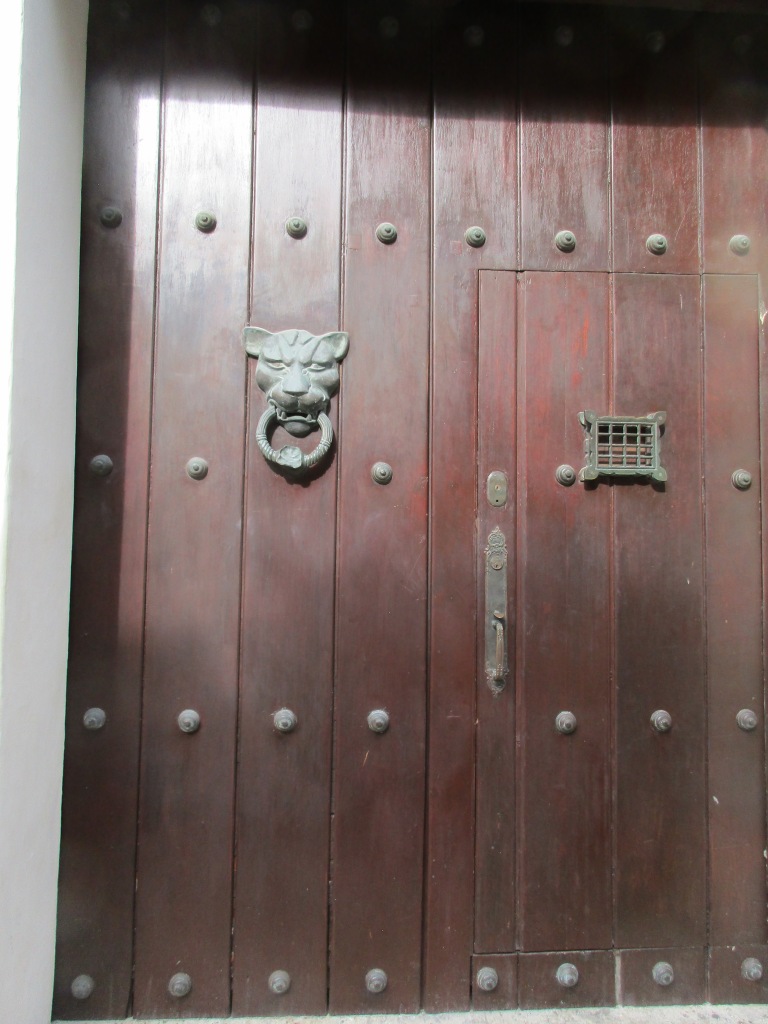
People in the army or militia put up lion heads.
This door has both the royal lion and a mermaid, representing a merchant or someone working in the navy.
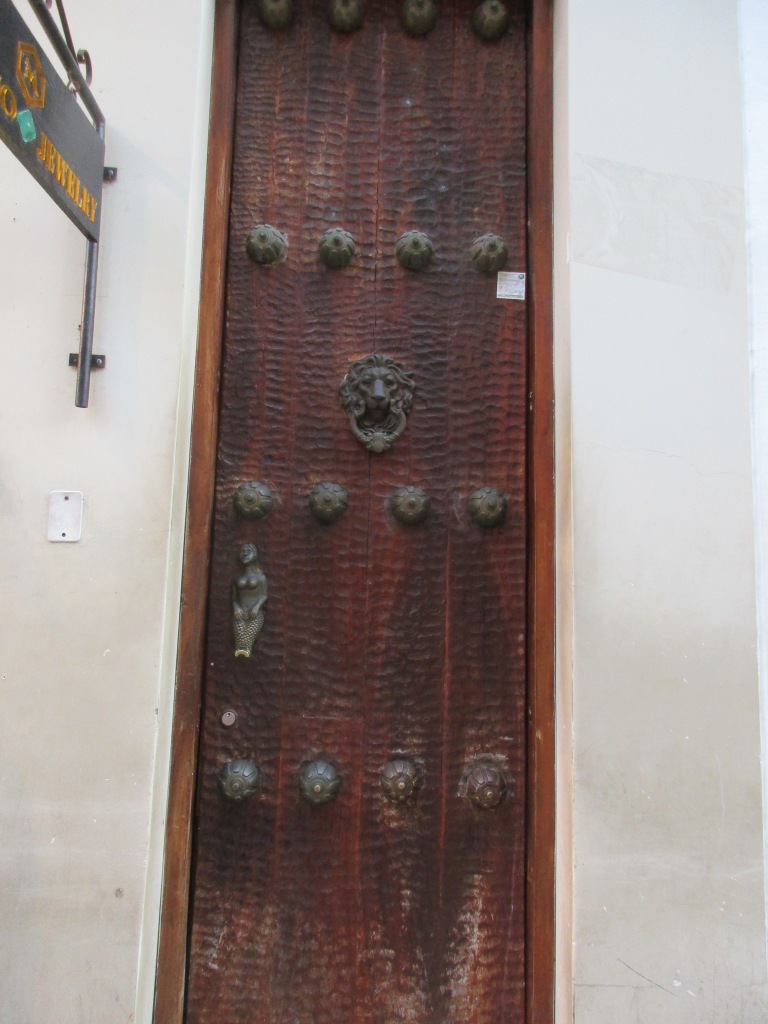

The following are a few doors that are more contemporary.


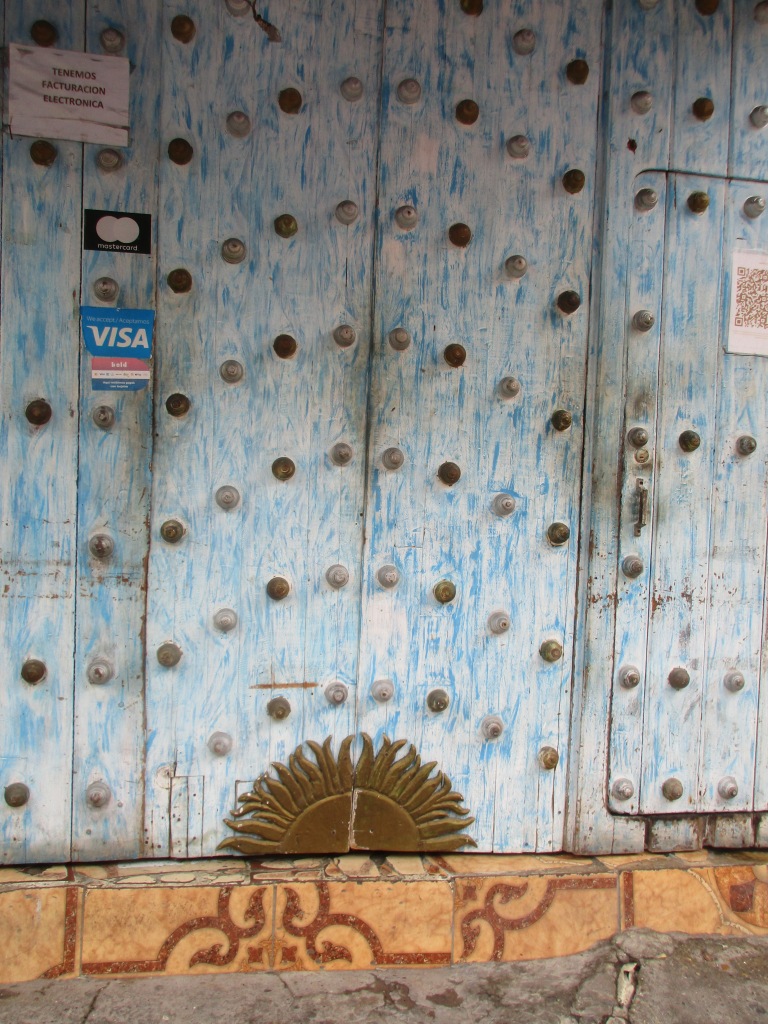
Charles Deering was a northern industrialist who built his last home, the so-called Stone House, on Biscayne Bay south of downtown Miami in the early twentieth century. Deering was a lover of Spanish art and a collector of, among other things, medieval Spanish metalwork, much like the adornments decorating many of the doors of colonial Cartagena.

The two-three story buildings that line the narrow streets of Cartagena shelter hidden patios in their interiors, an aspect of their Spanish heritage.
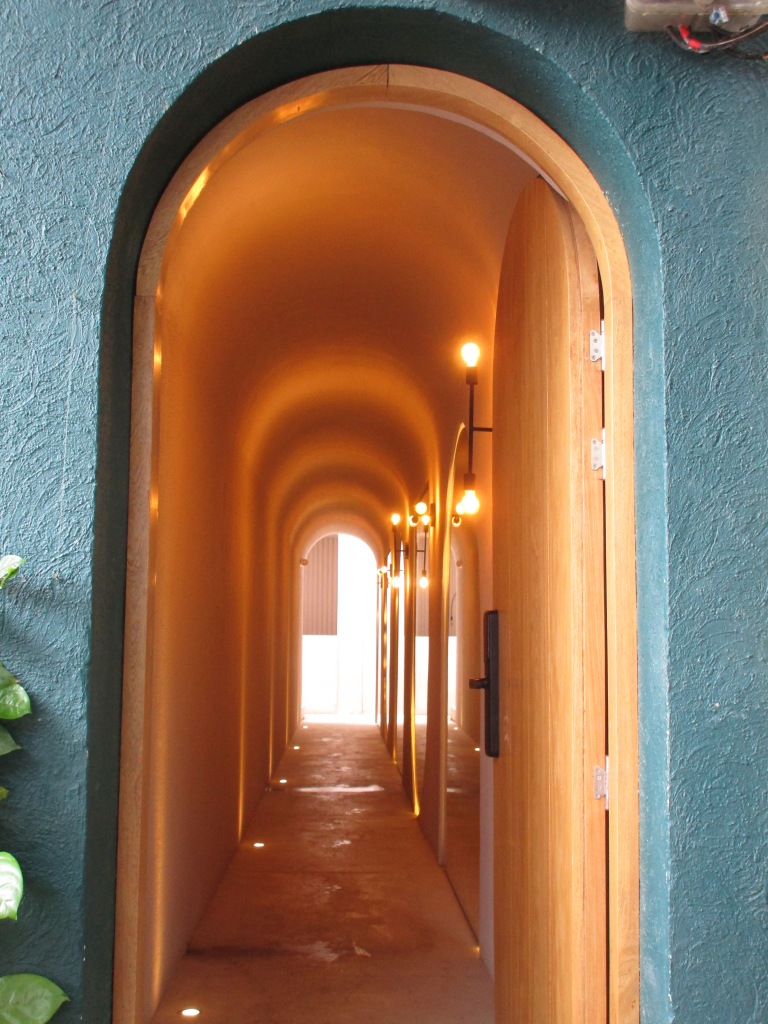

This was the entryway to a private residence with the patio peeking through the pottery.
And then there were those unusual, peaked roof tiles on the edges of balconies and rooftops. Were these to deter witches in the colonial days, as our tour guide told us, or for some other reason?
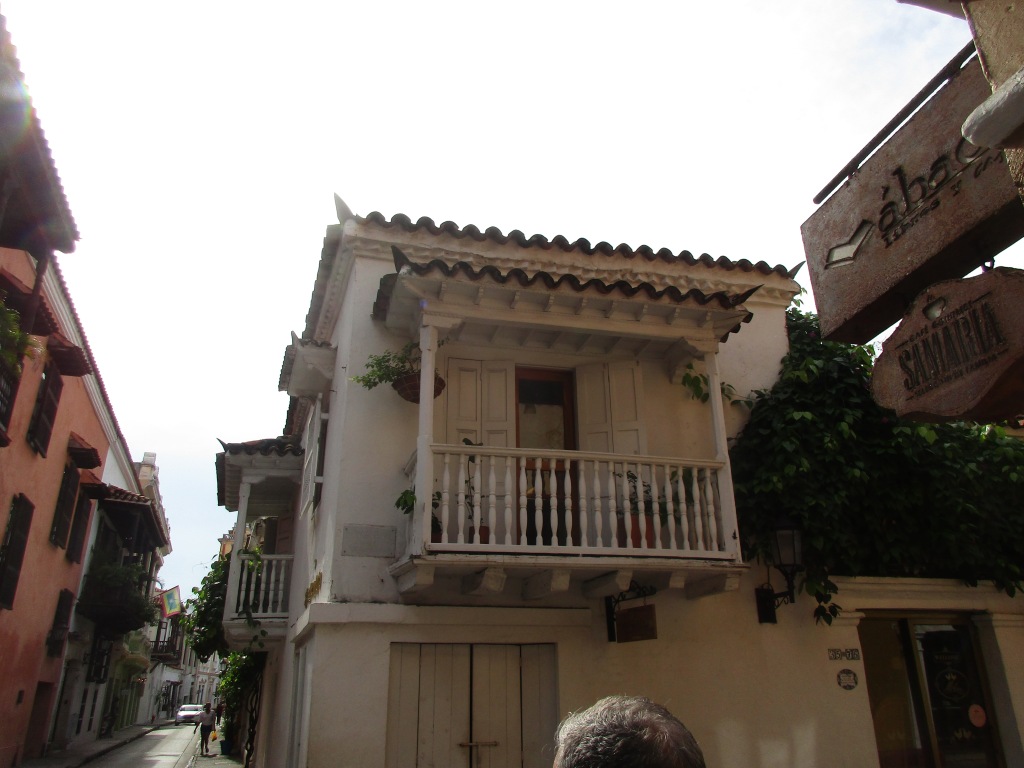
Wonderful architecture!
LikeLike